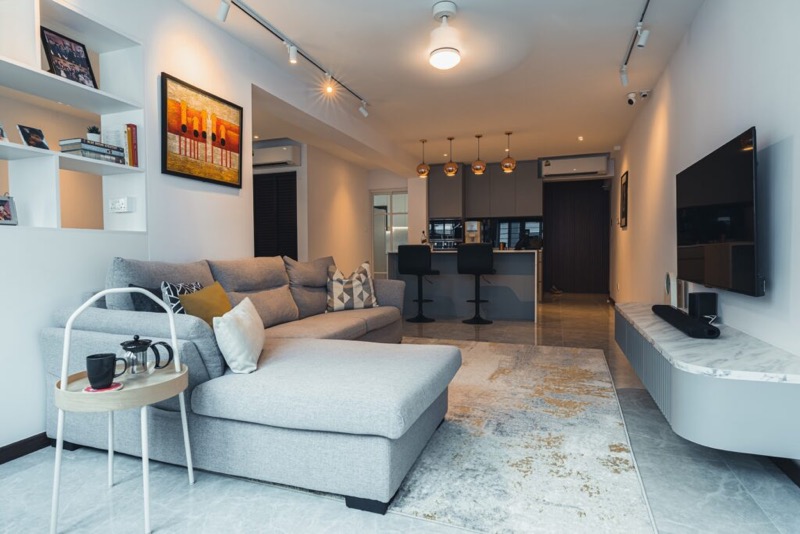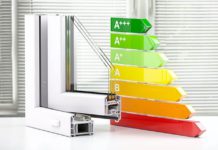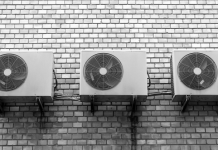Think your home is 100% efficient? Think again. Home efficiency could be improved in a variety of ways. There has been a trend in homeowners looking to upgrade their homes while going green and saving energy. Here are five energy-efficient home improvement ideas you might want to consider.
Energy-efficient home improvement ideas can help you save on your utility bills and make those monthly expenses more manageable. It’s important to be mindful when making changes to your home that you don’t cut into the benefits of making a change by increasing utility costs elsewhere. It’s also a good idea to speak with your contractor or professional energy auditor before making changes.
Did you know that getting a new roof with insulation can help make your home more energy efficient? Get up to 4 quotes to replace your roof from the best roofers in Winnipeg at ManitobaRoofers.com.
-
Ditch the dryer
Clothes dryers are major energy hogs, and they also emit greenhouse gasses into the air. A better solution is to invest in a clothesline or drying rack. You can have one inside your home if you don’t have an outdoor space for it. And if you still feel the need for a dryer, opt for a high-efficiency model that doesn’t consume as much power.
Get a clothesline or use a drying rack to hang wet clothing out to dry. If you’re worried about the way your laundry looks when it dries this way, try draping softer items like t-shirts and socks over the backs of chairs. The sun will naturally remove odors from your clothing and help bleach out stains. Using an electric dryer is one of the least efficient ways to dry clothes, so if you can get rid of yours, go for it!
-
Select energy-efficient glass doors
The glass that is used for the door plays a large role in how energy efficient it will be. To make sure that you get the most energy efficient glass choose a triple pane door with low-E coating. This will reduce heat loss in cold months and reflect heat during warm months, saving you money on heating and cooling bills.
The best entry doors have recycled fiberglass cores and polyurethane foam insulation. Some have double or triple panes of glass. Steel or fiberglass skins create a tough exterior that resists dents. You can choose from many different door styles, including some with windows.
When you choose a door, compare its energy performance rating, or U-factor, with other models. A U-factor indicates how well the door conducts heat; a lower U-factor means better energy efficiency. Choose a door with a U-factor of 0.30 or less for cold climates and 0.36 or less for mild climates.
-
Insulate your air ducts
To improve the energy efficiency of your home, you should insulate your air ducts. Adding insulation to your air ducts can help reduce heat loss and improve comfort in your home. It also helps save money on energy bills.
Where Can I Find My Air Ducts?
Air ducts are located behind walls and ceilings, so you can’t see them from inside your home. You may be able to see some ductwork in an unfinished basement or attic area. Or look for a removable cover where the ductwork is exposed around utility penetrations through floor joists or ceiling joists.
What Kind of Insulation Should I Use?
To insulate ductwork that’s not visible, use an un-faced fiberglass batt insulation that has a vapor retarder. You can also use foam board insulation as an alternative. Be sure to check with local building codes for any specific requirements before starting the installation.
How Do I Install the Insulation?
To install insulation around ducts in an unfinished basement, attic, or crawlspace, you’ll need protective clothing, measuring tape, a utility knife, safety glasses and work gloves. Other items include some type of markers (pencil or chalk), straight edge and cutting surface (such as plywood).
-
Choose energy-efficient appliances
To make your home more energy efficient, choose appliances that are Energy Star-rated. Energy Star is a joint program of the U.S. Environmental Protection Agency and the U.S. Department of Energy helping us all save money and protect the environment through energy efficient products and practices.
Energy Star products meet strict energy efficiency guidelines set by the U.S. Environmental Protection Agency and the U.S. Department of Energy. These products save energy, save money, and help protect our climate through superior energy efficiency.
-
Upgrade your lighting
The best way to save energy in the home is to upgrade your lighting. There are many benefits of upgrading, but the main one is that you will save money on your electricity bill.
Upgrading your lighting is easy, and it doesn’t have to cost much money. You can start by replacing traditional incandescent bulbs with compact fluorescent bulbs (CFLs). CFLs use about 75% less energy than traditional bulbs and last up to 10 times longer. An added bonus of CFLs is that they give off less heat than traditional incandescent bulbs, which helps cut costs during the hot summer months.
Another great way to save energy and money is by installing programmable thermostats. Programmable thermostats allow you to control the temperature in your home while you are away or asleep, which will save you money on your heating and cooling bills.
So what are the five energy-efficient home improvement ideas we’ve covered today? There’s plenty of room for debate here, but it’s important to follow through on your intentions. Without good intentions, you’ll find yourself paying more money in utility bills. The information here is a solid starting point, but you will have to find what works best for you, as everyone’s home is a little different.
If part of your project of turning your house more energy efficient is replacing your roof, consider going to ManitobaRoofers.com to get up to 4 quotes from top rated roofing companies in Winnipeg.
Infographic Provided By The Solar Energy Company, Route 66 Solar




